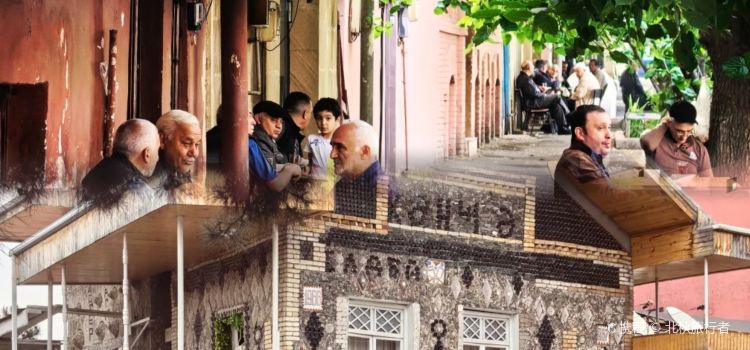Furor Restaurant & Pub
No comments yet
AU$11

Open Now|00:00-23:59
+994 22 252 10 10
What travelers say:

Nice restaurant decoration but average food
More
Reviews of Furor Restaurant & Pub
Some reviews may have been translated by Google Translate
0/5
All (2)
Latest
Photo reviews (1)
Nice restaurant decoration but average food
#Azerbaijan visa-free entry into force 🌟Ancient post station Ganja: red bricks, glass bottles and wrinkles of war memory 🌸At the window of Baku Railway Station, I stumbled over the last two tickets - to the ancient post station Ganja deep in the heart of Azerbaijan. This train to neighboring Tbilisi has only two trains a day, early in the morning and at dusk, like two wedges embedded in time. I held the ticket for 6 pm and repeatedly confirmed the pronunciation of "Ganja", fearing that I would be sent to an unknown distance by the rails. ❤️The wheels rolled over the land on the southern edge of the Caucasus. When I arrived, Ganja greeted me with an almost deserted tranquility. This ancient city, which can be traced back to nearly 500 years before Christ, was once the cradle of a short-lived republic, but now it has been washed away, revealing a trace of fatigue stained by the years and the smoke of neighboring gunpowder. 🔥**Black tea and the scars of war:** In an inconspicuous corner of the city, a cup of Azerbaijani black tea is the first to awaken the senses. The soup is like pure red wine, bright and shining. The first sip is straightforwardly bitter, without sugar or water. Let the unique fragrance permeate in the mouth - not only mint, but also the indescribable smell of exotic spices, entwining the tip of the tongue, like the complex history of this land. Walking in the small streets of Ganja, the shadow of war is everywhere. It is just a stone's throw away from the conflict site Nagorno-Karabakh (Nagorno-Karabakh). The memorial plaque on the corner of the wall, engraved with the names and photos of young soldiers, silently tells the pain that is close at hand. This heaviness is the background sound that cannot be erased in this ancient city. 🔅**Frozen fantasy and time:** However, Ganja's tenacity and imagination grow in the cracks. The most peculiar scenery in the city is the **Bottle House**. Under the dark clouds, this two-story building is a little quiet. But imagine what it looks like in the sun - how colorful the walls made of 48,000 recycled glass bottles and sea stones would be? This was the longest and most brilliant yearning of an elder brother for his younger brother who disappeared in World War II in 1966. It is like a fairy tale, stubbornly rooted in the soil of reality. Red bricks are the background color of Ganja. **Aleksand Nevskiy Church** stands silently, the red brick masonry of 1887 has oxidized to a deeper color over time, and the Byzantine dome tells the mark of the Tsarist era. Solemn and vicissitudes. 🐳**The Poet's Rest and the Echo of the Park:** Feel the soul of Azerbaijani literature at the mausoleum and memorial of the poet Nizami. And **Khan Baghi Park** is blowing an even older wind. This park, known as the oldest in the Caucasus, was built in 1582 and has been damaged by war. The traces of restoration in 1847 are still there. Walking through it, under the shade of ancient trees, there are echoes of several centuries. The Lada car drove through the street, passing by the exquisite mosaic decorations on the mottled walls. The magical light of red bricks and glass bottles, the luster of mosaic fragments, the tranquility of the poet's cemetery, the ancient greenery of the park, and the ubiquitous war memorials... These images interweave and collide to form the unique urban texture of Ganja - a unique wrinkle that mixes deep history, artistic resilience, war trauma and the breath of ordinary life. When leaving, the engine sound of bus No. 4 opposite the train station sounded. Looking back at Ganja, it is like a cup of unsweetened black tea. It tastes bitter at first, but after careful tasting, it is a complex and long-lasting fragrance, quietly drifting in the wind, in the cracks of red bricks, and in the dim light of glass bottles. #LightLuxuryTravel #AzerbaijanTravelGuide #SonglikeJourney #WheretoGoInSummer